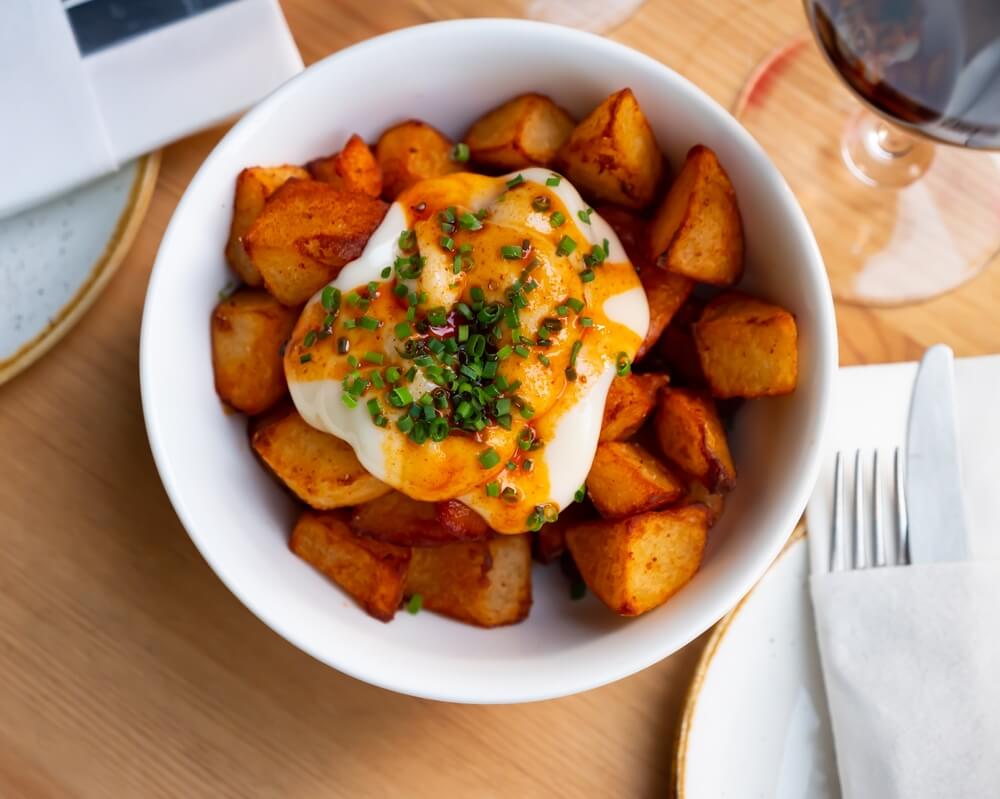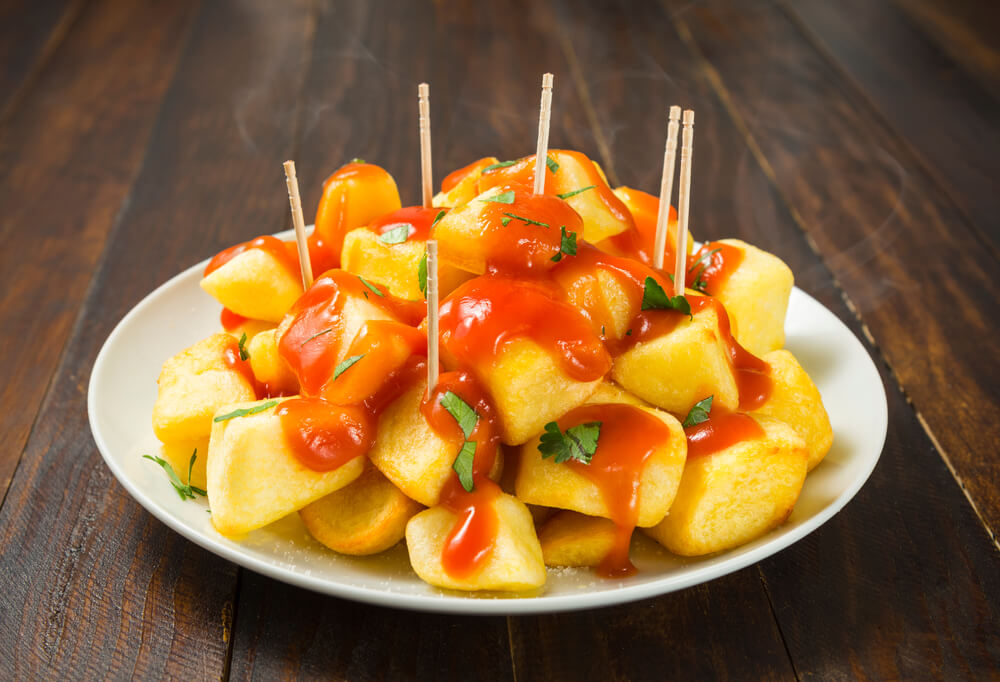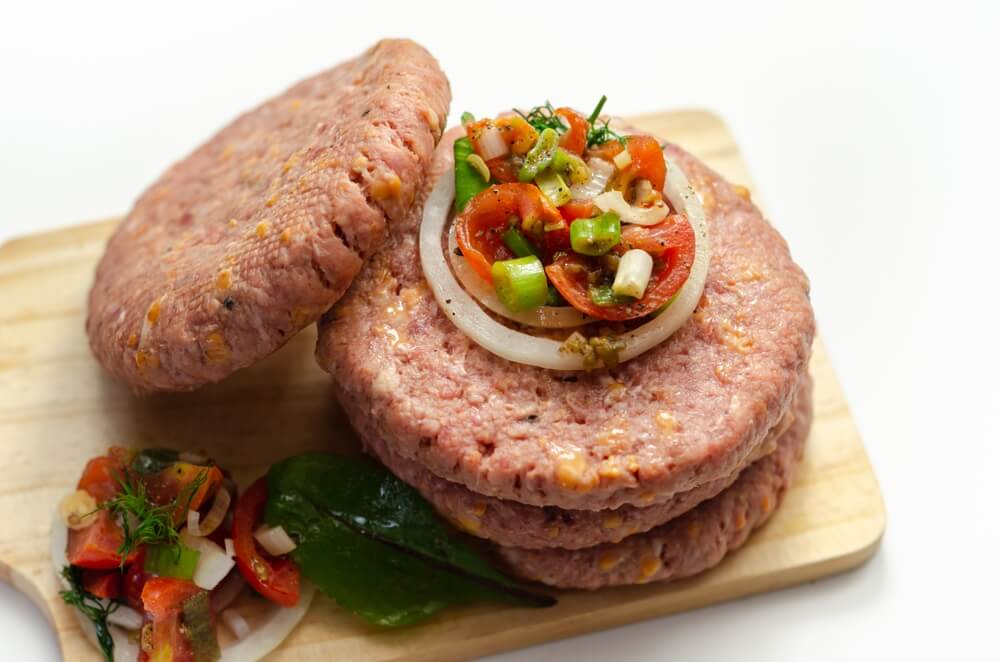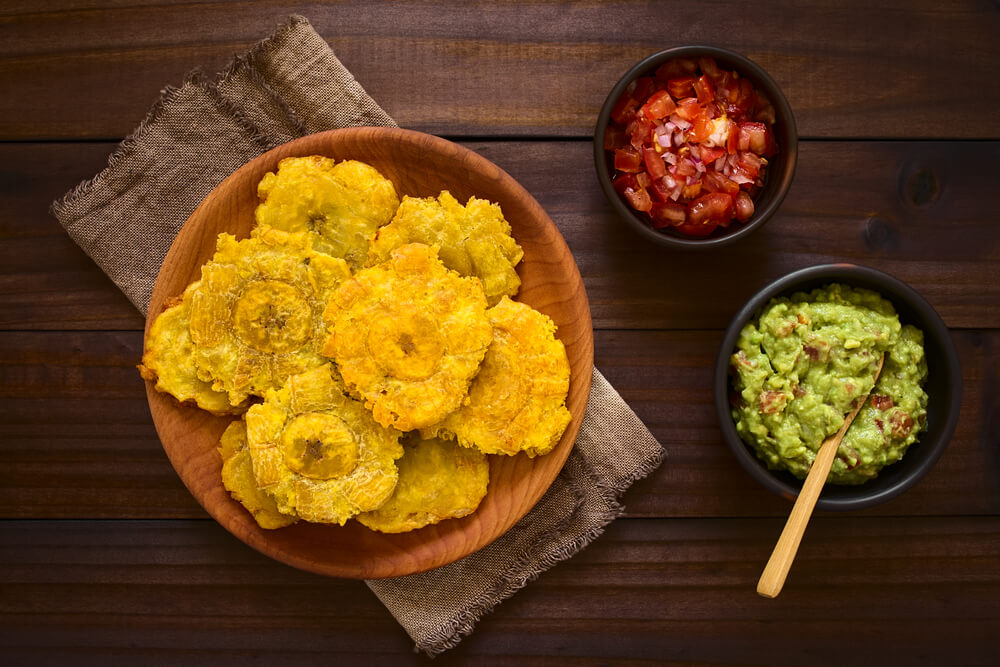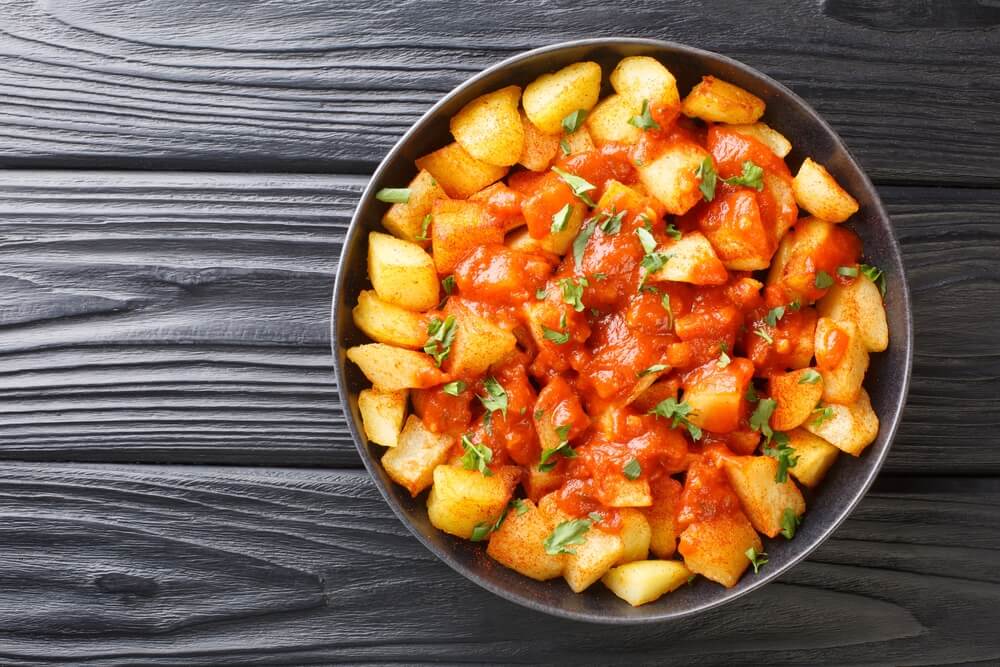
October 26, 2023
What Is Bravas Sauce (Salsa Brava) and How To Make It
Bravas Sauce, also referred to as salsa brava, originates from Madrid, Spain. This piquant sauce boasts a deep, mildly spicy, and smoky profile, largely attributed to the smoked paprika it contains. Typically poured over deep-fried potatoes, it becomes the centerpiece of the renowned Spanish dish, patatas bravas. Its adaptable nature allows it to complement various dishes, enhancing their taste profile. For instance, it is hugely popular in combination with tasty burgers, so don’t hesitate to try it yourself with the best burgers in Miami Beach & Brickell available at Burgermeister.
What Is Bravas Sauce?
Emerging from Madrid, Spain, Bravas Sauce, or salsa brava, is a spicy delight. It’s synonymous with patatas bravas, a dish featuring potatoes fried in olive oil and soaked in this lively sauce. The sauce isn’t overly spicy. The unique smoky taste and mild zing stem from pimentón, the Spanish term for smoked paprika. Both the spicy variant, pimentón picante, and the sweeter kind, pimentón dulce, are frequent ingredients in bravas sauce. The ideal bravas sauce is lump-free and possesses a creamy texture – not too thick yet pourable. A point of contention among chefs is the inclusion of tomatoes in the bravas sauce recipe. While some advocate for their use, others argue that smoked paprika alone should determine the sauce’s hue. In our rendition, a smidgen of tomato paste is used for consistency, color, and a touch of umami.
Ingredients for Salsa Brava
To concoct this hearty red concoction, gather:
- Extra virgin olive oil: Crucial for flavor.
- Garlic cloves: Thinly sliced, they infuse the oil with their essence.
- Tomato paste: It introduces color, slight acidity, and umami.
- Smoked paprika: The heart of the sauce, adding depth and mild heat.
- Red pepper flakes: Lending spice, adjustable to taste.
- Cornstarch: It ensures the desired sauce consistency.
- Vegetable broth: Facilitates a creamy texture.
- Sherry or red wine vinegar: Introduces a refreshing tang.
How to Craft Bravas Sauce
- Preparation involves thinly slicing garlic.
- For the garlic: Warm the olive oil on medium, adding garlic until it adopts a golden hue. Remove and discard the garlic after infusing.
- For the sauce: Diminish the flame, incorporating tomato paste, smoked paprika, red pepper flakes, and cornstarch. Mix in the vegetable broth, continuously stirring until smooth and somewhat thick. After approximately 10 minutes, introduce the vinegar, whisking one final time before removal.
- To store: If paired with patatas bravas, drench them immediately. Otherwise, decant into a jar, cool, and store chilled.
Bravas Sauce Recipe Tips
- Avoid over-browning garlic; aim for a light infusion.
- Continuous whisking is pivotal for texture.
- Overdoing cornstarch can lead to excessive thickness.
- Spice intensity is adjustable through paprika and pepper flakes.
Storage & Reheating
Refrigerated in a sealed jar, bravas sauce lasts 4 days. It densifies over time; dilution with broth or water during reheating may be necessary. For reheating, pour into a saucepan and stir until ideal thickness is attained.
Freezing Bravas Sauce
Post cooling, this sauce can be frozen for up to three months. For usage, thaw overnight and follow standard reheating procedures.
The Cultural Significance of Bravas Sauce
Bravas sauce, like many traditional recipes, is more than just a culinary delight; it’s a reflection of Spain’s rich history and diverse culture. The Spanish tapas tradition, where small dishes are shared among friends and family, is a testament to the country’s communal and festive spirit. Within this tradition, patatas bravas stands out as a favorite, and its star ingredient, the bravas sauce, is a testament to Spain’s love for flavors that are bold yet balanced.
The Evolution of Bravas Sauce
While the core ingredients of bravas sauce have remained relatively consistent, regional variations have emerged over time. In some parts of Spain, for instance, a hint of aioli (a garlic and olive oil emulsion) is mixed into the bravas sauce, giving it a creamier texture and a more pronounced garlic flavor. In other regions, a touch of cayenne pepper or even local spicy peppers might be added to give the sauce an extra kick.
Pairing with Bravas Sauce
Beyond patatas bravas, the sauce’s smoky and spicy profile makes it an excellent pairing with various dishes. In Spain, it’s not uncommon to find bravas sauce accompanying grilled meats, especially during outdoor barbecues in the summer. The sauce’s robust flavor complements the charred taste of grilled foods. Additionally, in modern fusion cuisine, chefs are experimenting with bravas sauce in non-traditional ways, such as in pasta dishes or even as a base for pizza.
The Art of Balancing Flavors in Bravas Sauce
One of the standout features of bravas sauce is its impeccable balance of flavors. While it carries a spicy undertone, it doesn’t overpower the palate. This equilibrium is a testament to the Spanish culinary philosophy of harmony in dishes. The smokiness of the paprika, the richness of the olive oil, the tang of the tomato, and the heat from the pepper flakes all play their roles, ensuring that no single flavor dominates. This balance is crucial, especially when the sauce is paired with other dishes. When drizzled over patatas bravas or other tapas, it enhances the food’s taste without overshadowing its inherent flavors.
This art of balancing flavors in bravas recipe is a skill that many chefs aspire to master and is a hallmark of well-made bravas sauce. It serves as a reminder that sometimes, the beauty of a dish or a sauce lies in its subtleties and the symphony of flavors working in harmony.
Health Benefits
While bravas sauce is undoubtedly delicious, its health benefits are also worth noting. The primary ingredient, olive oil, is a staple in the Mediterranean diet and is known for its heart-healthy properties. Rich in monounsaturated fats and antioxidants, olive oil can help reduce bad cholesterol levels and inflammation. Moreover, paprika, another key ingredient, contains vitamins and antioxidants that can boost your immune system and improve your skin health.
The Global Influence of Bravas Sauce
The global culinary scene has seen a surge in the popularity of Spanish cuisine, and with it, the rise of bravas sauce outside of Spain. As tapas-style dining becomes more prevalent in restaurants worldwide, dishes like patatas bravas have found their way onto menus from New York to Tokyo. This global embrace has led to innovative interpretations of the classic bravas recipe. In some international kitchens, chefs incorporate local ingredients, blending traditional Spanish flavors with regional tastes.
For instance, in parts of Asia, a hint of sesame oil or soy sauce might be added to the bravas sauce, creating a fusion that resonates with local palates. This global adaptation not only showcases the versatility of bravas sauce but also highlights how food can be a bridge, connecting cultures and fostering mutual appreciation.
If You’re Hungry…
In conclusion, bravas sauce is a delightful addition to many dishes, not just patatas bravas. Its rich, smoky flavor can enhance meats, fish, and even vegetables. Once you’ve tried it, you’ll find many uses for this delicious sauce in your culinary adventures. Of course, contact Burgermeister now if you’re looking for a place to dine and try this delicious sauce immediately.
Share This Article
